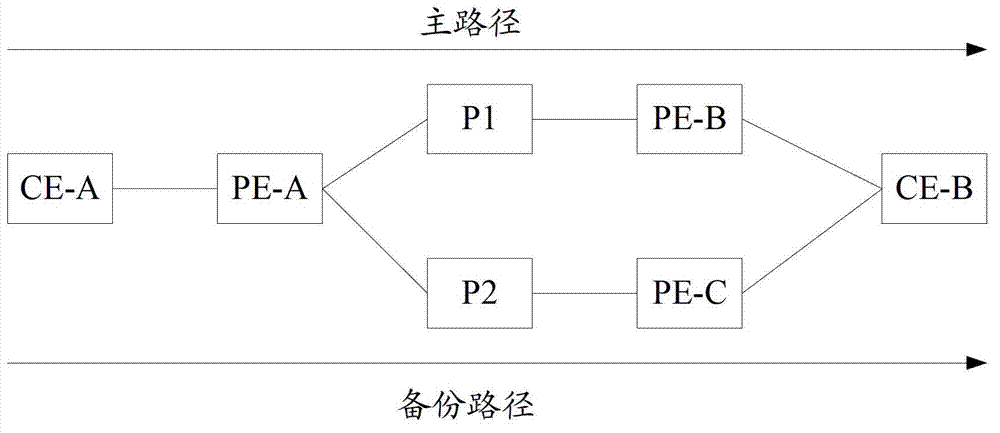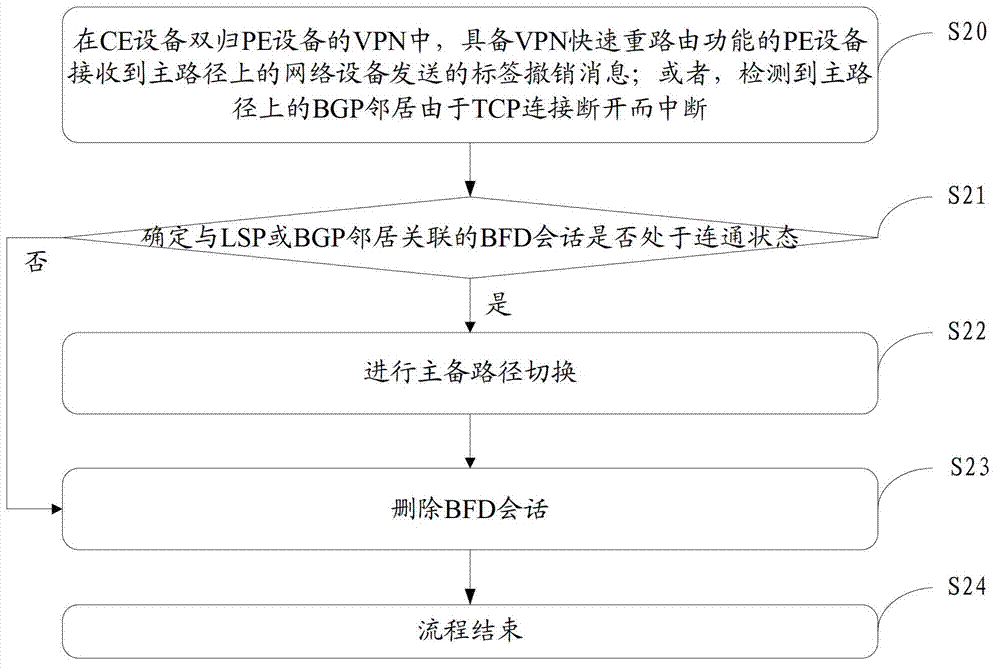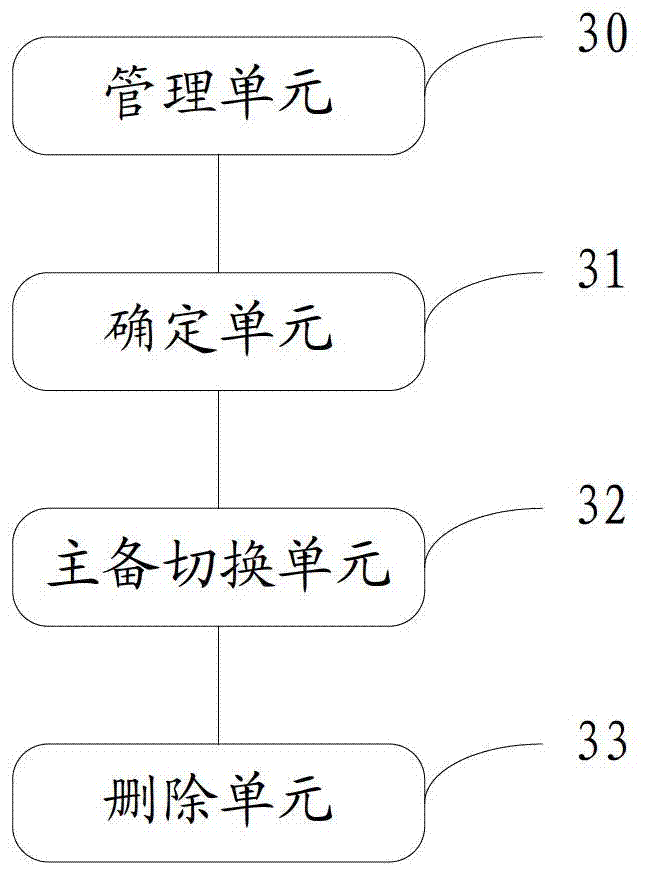VPN (Virtual Private Network) fast rerouting method and device and provider edge device
A business edge, fast technology, applied in the computer field, can solve the problem of unable to achieve fast convergence of VPN services
- Summary
- Abstract
- Description
- Claims
- Application Information
AI Technical Summary
Problems solved by technology
Method used
Image
Examples
Embodiment 1
[0046] This embodiment uses BFD to detect LSPs as a fault detection mechanism for VPN fast rerouting.
[0047] After P1 warm restarts, the LDP module of P1 will delete the LSP and send label withdrawal messages to PE-A and PE-B.
[0048] If the BFD module in PE-A first detects that the BFD session associated with the LSP is terminated, the BGD module will notify the switching unit to switch the active and standby paths, and the switching module will switch the VPN traffic from CE-A→PE-A→P1→PE Switch from the main path -B→CE-B to the backup path of CE-A→PE-A→P2→PE-C→CE-B.
[0049] If the LDP module in PE-A receives the label revocation message first, it will delete the LSP corresponding to the label revocation message, and notify the switching module to switch the active and standby paths, and the switching module will switch the VPN traffic from CE-A→PE-A→ The main path P1→PE-B→CE-B is switched to the backup path of CE-A→PE-A→P2→PE-C→CE-B, and then the LDP module notifies the...
Embodiment 2
[0052] This embodiment uses BFD to detect LSPs as a fault detection mechanism for VPN fast rerouting.
[0053] After PE-B warm restarts, the LDP module of PE-B deletes the LSP, and then sends a label withdrawal message to P1.
[0054] After receiving the label withdrawal message, the LDP module in P1 deletes the LSP corresponding to the label withdrawal message, and then sends the label withdrawal message to PE-A.
[0055] If the BFD module in PE-A first detects that the BFD session associated with the LSP is terminated, the BFD module will directly notify the switching module to switch the VPN traffic from CE-A→PE-A→P1→PE-B→CE-B This primary path is switched to the backup path of CE-A→PE-A→P2→PE-C→CE-B.
[0056] If the LDP module in PE-A receives the label revocation message first, after deleting the LSP corresponding to the label revocation message, it first notifies the switching module to transfer the VPN traffic from CE-A→PE-A→P1→PE-B→CE- Switch the primary path of B to...
Embodiment 3
[0058] This embodiment uses BFD to detect BGP neighbors as a fault detection mechanism for VPN fast rerouting.
[0059] After PE-B warm restarts, the BGP module of PE-B disconnects the TCP connection with PE-A.
[0060] If the BFD module in PE-A first detects that the BFD session associated with PE-B as a BGP neighbor is terminated, it will notify the switching module to directly transfer the VPN traffic from CE-A→PE-A→P1→PE-B→CE-B. switch from the primary path to the backup path of CE-A→PE-A→P2→PE-C→CE-B.
[0061] If the BGP module in PE-A first detects that PE-B is interrupted as a BGP neighbor due to the disconnection of the TCP connection, it first notifies the switching module to transfer the VPN traffic from CE-A→PE-A→P1→PE-B→CE- Switch the primary path of B to the backup path of CE-A→PE-A→P2→PE-C→CE-B, and then notify the BFD module to delete the BFD session associated with PE-B.
PUM
 Login to View More
Login to View More Abstract
Description
Claims
Application Information
 Login to View More
Login to View More - R&D
- Intellectual Property
- Life Sciences
- Materials
- Tech Scout
- Unparalleled Data Quality
- Higher Quality Content
- 60% Fewer Hallucinations
Browse by: Latest US Patents, China's latest patents, Technical Efficacy Thesaurus, Application Domain, Technology Topic, Popular Technical Reports.
© 2025 PatSnap. All rights reserved.Legal|Privacy policy|Modern Slavery Act Transparency Statement|Sitemap|About US| Contact US: help@patsnap.com



